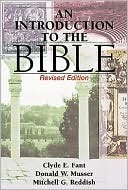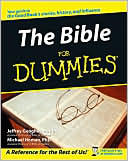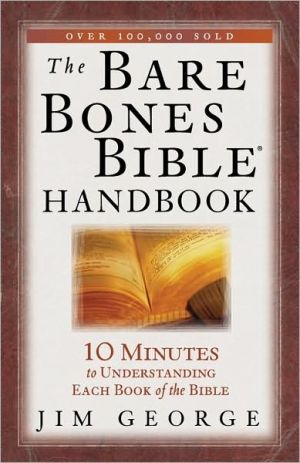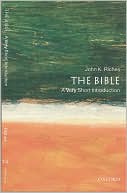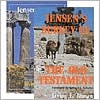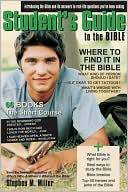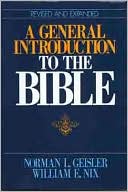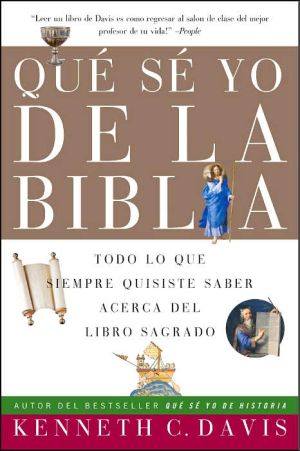Introduction to the Bible
Search in google:
This text provides a comprehensive and definitive introduction to the literature, cultures, and theologies of the early Jewish and Christian traditions. Designed to be read with selected passages from the Bible and the Apocrypha, An Introduction to the Bible offers essential information to students with little or no experience in the academic study of religion. It will help students gain a solid background for future work in biblical studies. The revised edition includes information regarding new directions in biblical studies, a revised bibliography, and a subject index - as well as maps, charts and photographs."This volume is pedagogically self-aware. Here speak teachers who live close to the teaching environment. The narrative account of a great deal of material is patient, attentive to detail, willing to pause to provide small instructional clues, all the time keeping the big picture in focus. This second edition of the book attests both to the vitality of its authors and to the positive reception the book has already enjoyed. Given the large cultural crisis upon us, such instruction in a context that reaches beyond 'the choir' is welcome and enormously important. Clear, well organized, up to date, and reflective of reliable scholarly consensus. Most important, I suspect, is the likelihood that its student-users will sign up for more scripture study....[The book] will help students generate not only a beginning with the Bible, but a long-term interest." —Walter Brueggemann, Columbia Theological Seminary, Decatur, Georgia."As most instructors of introductory survey courses in biblical studies will attest, finding a suitable textbook can be quite a challenge. The revised edition of An Introduction to the Bible marks a strong contribution to the field. It is a well-structured, clearly written textbook. The authors incorporate many of the newest discussions regarding the formation and subsequent understandings of both the Hebrew Bible and the New Testament. Students using this book will be exposed to the rich content of ancient Near Eastern studies. They will also find themselves challenged to read these classical texts using some of the most recent hermeneutic arguments in circulation....An Introduction to the Bible provides an excellent entry point for a critical approach to the sacred texts of Judaism and Christianity."—-C. Shaun Longstreet, Texas A&M University, excerpted from the Review of Biblical Literature, August 2003.
List of Illustrations11Preface15Abbreviations of the Books of the Bible with the Apocrypha17Part IIntroduction to the Study of the Bible1.The Bible and Western Culture21The Roots of Western Civilization21The Cultural Influence of the Bible23What Is the Bible?28Approaches to the Bible312.Methods and Tools for Studying the Bible35Types of Biblical Criticism35Related Disciplines51Tools and Reference Works52Consolidating the Results533.The Origins and Development of the Bible55Formation of the Hebrew Bible55Formation of the Christian Bible62The Process of Translation684.The Cultural and Geographic Context of the Bible75The Shape of the Ancient Near East75The Land Called Palestine80Vital Evidence: Archaeological Discoveries89Part IIOrigins and Early Development of the Jewish Tradition5.Hebrew Origins and Early History97Israel's Ancestral Narratives98Characteristics of the Ancestral Narratives101The Ancestral World103Ancestral Religion106The Exodus and Wilderness Traditions109Characteristics of the Exodus-Wilderness Narratives1126.The Era of the Judges121The Settlement in Canaan121Tribal Life and Leadership126The Divine-Human Encounter in the Era of the Judges1297.The United Kingdom and the Yahwistic History135The Desire for a King135The First Kings: Saul and David139The Reign of Solomon146Theological Developments During the Monarchy150The Yahwistic History1508.The Divided Kingdom: Israel and Judah155The Nature of the Sources155The Division of the Kingdom159The Northern Kingdom (922-722 B.C.E.)160The Southern Kingdom (922-587 B.C.E.)1679.The Institution of Prophecy175Background of Hebrew Prophecy175The Nature of Hebrew Prophecy176Functions of the Hebrew Prophets177Representatives of Preliterary Prophecy180The Divine-Human Encounter in the Preliterary Prophets18410.The Preexilic Prophets185Amos185Hosea189Isaiah192Micah197Jeremiah198Zephaniah202Nahum203Habakkuk203The Preexilic Prophets and the Divine-Human Encounter20411.The Exile, Exilic Prophets, and Exilic Histories205The Historical Situation205The Exilic Prophets208The Exilic Histories21612.The Restoration of Judah221The Restoration (538-424 B.C.E.)221The Literature of the Restoration225The Divine-Human Encounter in the Restoration23013.The Psalms and Wisdom Literature233Psalms233Wisdom Literature24014.Judaism in the Hellenistic and Roman Eras251Political Developments in Palestine251Religious Developments in Judaism259Literary Developments in Judaism26615.Daniel and the Books of the Apocrypha271The Book of Daniel271The Books of the Apocrypha277The Influence of the Apocrypha285The Divine-Human Encounter in the Hellenistic and Roman Eras288Part IIIOrigins and Early Development of the Christian Tradition16.The Life and Teachings of Jesus295Sources of Information297Obstacles to Achieving a Biography of Jesus303Core Elements of a Life Sketch of Jesus30517.The Development of the Gospels: From Oral Traditions to Mark319From Oral Traditions to Written Gospels319The Gospel of Mark32618.The Further Development of the Gospels: Matthew, Luke, and John337The Gospel of Matthew337The Gospel of Luke343The Gospel of John350Beyond the Four Gospels35719.The Development of the Early Church: The Acts of the Apostles359"Beginning in Jerusalem" (Acts 1-6)361"In Samaria and Judea" (Acts 7-8)366"To the Ends of the Earth" (Acts 9-28)370The Kerygma of the Emerging Church and the Divine-Human Encounter37520.Paul and His Cultural Environment379The Greco-Roman World379Sources for the Life and Teaching of Paul386The Life of Paul38721.Paul and His Writings395Paul as a Letter Writer395The Contents of Paul's Letters398The Divine-Human Encounter in Paul41222.The Developing Institutional Church417From Charisma to Institution417Sources for Study418The Church Distinguishes Right Belief from False Teachings (James; 1, 2, 3 John; Jude; 2 Peter, Colossians; 2 Thessalonians)420The Church Establishes Its Structure (1 and 2 Timothy, Titus, Ephesians)426The Church Encourages Fidelity in Difficult Times (Hebrews, 1 Peter)431The Divine-Human Encounter: Keeping the Faith in Later Generations43523.The Church in Conflict437Conflict with Judaism437Conflict with Rome441A Response to Persecution: The Book of Revelation446Selected Bibliography457Index465
